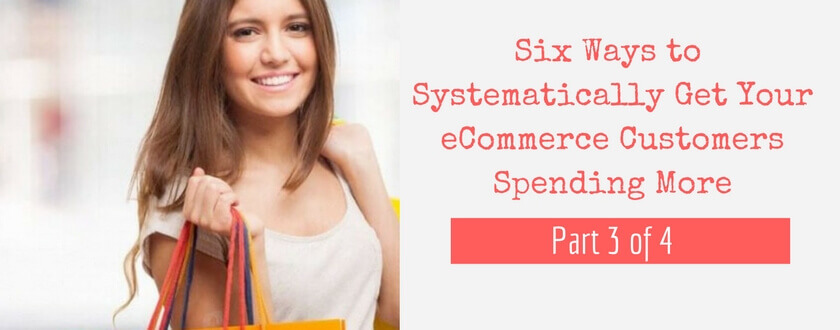This is part 3 of a 4 part current series we’re running on The Profit Triad of eCommerce. We’ve now know how we can get more customers coming in. What is important to remember though is we don’t want to just focus on getting more customers, because we know that is the most expensive way of growing. So we really, really, want to get them spending more, so increasing the average transaction value of each customer. Here are some different ways in eCommerce of how you can do that. Check out this video below to learn more:
Here we go, Six Ways To Systematically Get Them Spending More:
Number 1: Upsells
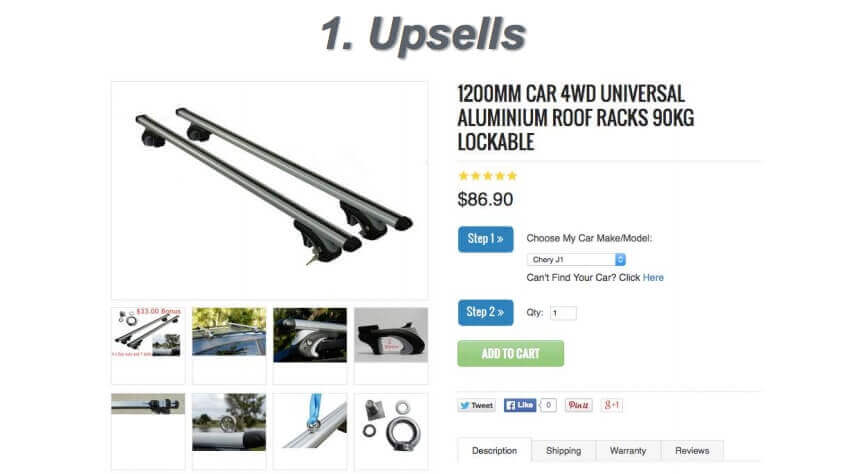
One of the things that I’ve found is a lot of people are subconscious about upsells. They don’t want to be pushy or they feel uncomfortable about it. And I had this conversation with another Australian, really, really smart marketer by the name of Andrew Grant, and he told me something which was just a point that I always remembered. He said, “If you’re worried about the selling process, then you’re inward focused and you’re not focusing on them.” So if what you’re upselling genuinely compliments what they’ve originally bought, and it’s genuinely going to be good value for them and a great product or service, then you’re doing them a disservice to not give them opportunity to grab it. And I’ve looked at stats as far as like global internet sales, and between 15% and 30% of eCommerce or sales revenue happens in this space. So you definitely, definitely don’t want to be shy of this.
I’ll show you a couple of different ways we do it. The first way is say you’ve got a standard product listing like above, and then imagine now we’ve pressed Add To Cart, and after we’ve pressed Add To Cart, it pops up with a light box. A light box is just basically making the rest of the screen black, and pushing your pop-up to front of screen, see below:
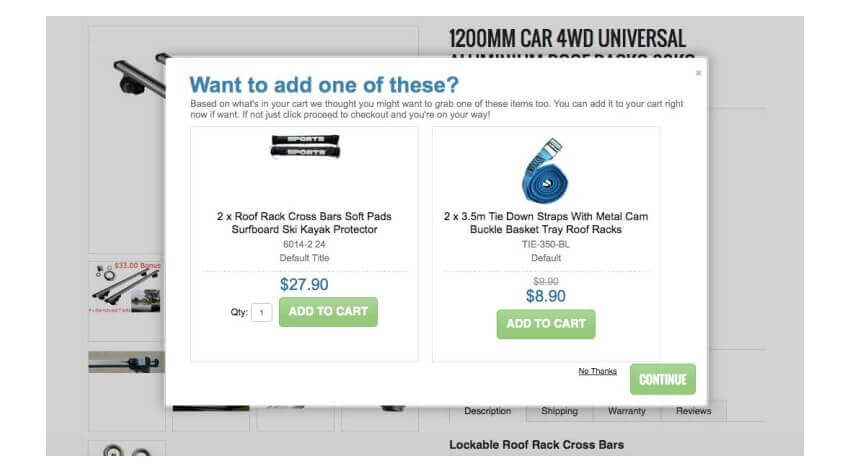
So we’ve done a lot of these types of eCommerce upsells. This is different to your funnel upsell, because what happens is in eCommerce, everything that they add to the cart, when they get to the cart, they see all those things, right? But how this is different is if you’re doing a tripwire offer, say free plus shipping, and they might check out just for the shipping, so free plus $4.95, and then they’ve checked out and then on the thank you page, it’s saying, “Do you want to add this?” and, “Do you want to add that?” It’s dramatically different because they do see what goes in the cart.
This type of upsell actually, across all different places we’ve tested it, only converts at about 10% maximum. So we don’t really use this style shown above as much as the next one.
Number 2: On Product Page ‘Add Customisation Options’ Upsell
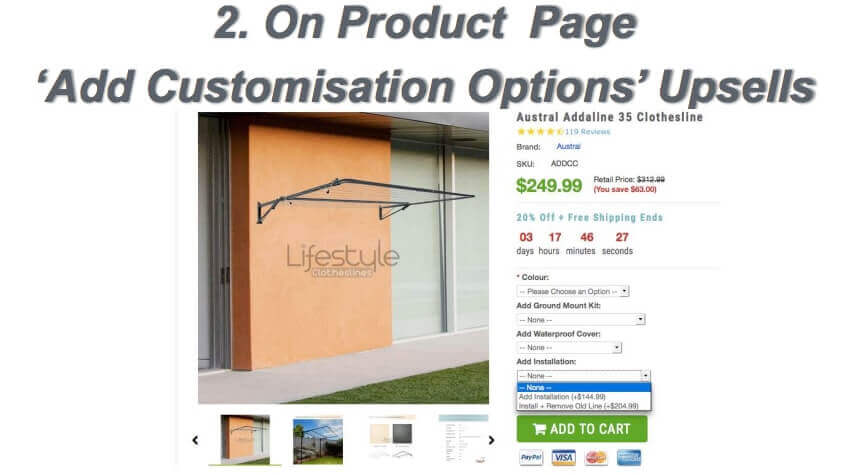
It might be a little bit hard to see in this example above, but what we’re saying here is you’re buying a clothesline and we’re also asking, “This is your colour, but would you like to add a ground mount kit? And would you like to add a waterproof cover? Would you like to add insulation?” And each time they choose an add as a dropdown, it shows them what the additional price is.
So this type of upsell compared to the other one works dramatically different. We’re getting 20% to 30% of people taking up these and there’s not that kind of uncomfortable thing about these types of upsells, because people just see it as their product options. Does that make sense? So no one really feels uncomfortable about these types of upsells and they seem to be working better. So we think it’s great and that’s the main type of upsell that we’re doing in eCommerce stores at the moment. That’s really what’s working best for us. It really is increasing the average order value of everyone that goes through the cart. And as we do know, the cost of clicks with your Google and Facebook ads is getting more and more expensive. So even if it averaged it out and you only made each person that bought your widget worth an extra $3 or an extra $7 that can mean the difference between you being profitable to scale or you breaking even or you losing money. So this concept is just so, so important if you want to really, really scale your eCommerce store.
Number 3: Order Form Bumps
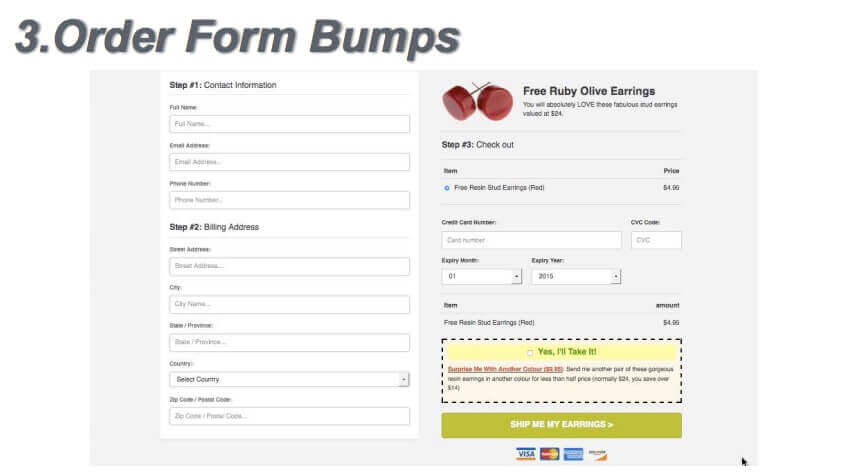
Another thing that I really love, and this isn’t just purely in eCommerce stores, is a strategy following the tripwire offer. On the order form, you can see above that yellow box down the bottom, it’s an order form…what I call “an order form bump.” I first learned this technique from Russell Brunson. What it is is just a tick box saying, “Here’s a special one-time offer. Do you want to grab it?” And it might be $19 or $29 or $39 or something to that effect. So in this case above it could be, “Do you want to grab a second pair of earrings?” What we found is every time you add this, it increases your average order value. So again it might make each person worth another $3 or $5 or $7.
I had a good conversation with Perry Belcher about this the last time that I was in the States. He said, “The only time that he doesn’t like order form bumps is if you’re selling continuity behind it,” which is monthly billing. He is of the opinion that it can have an adverse effect on conversion if you’re selling continuity, but for this sort of stuff (jewelery) it’s brilliant. I wouldn’t run another one of those funnels without adding that feature, because it just makes each person that goes through it worth more money to me. So remember these – Order Form Bumps – and test them out for yourself.
Number 4: Downsells
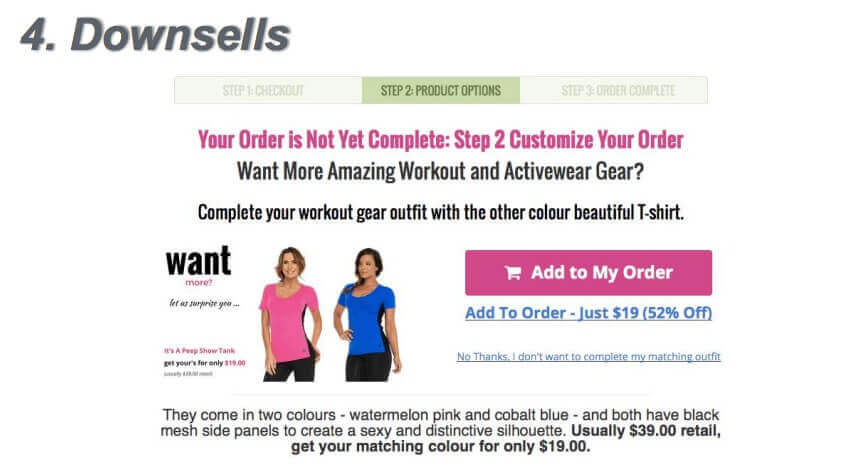
The next one is downsells. For example, if they didn’t take an upsell, then offering them a downsell saying, “Would you like to grab this instead?” So in this case above, we’re just saying, “Would you like to grab a second t-shirt?” As you can see, this is really taking the concepts we learned this morning and then applying them into our Australian retail businesses.
Number 5: Bundles
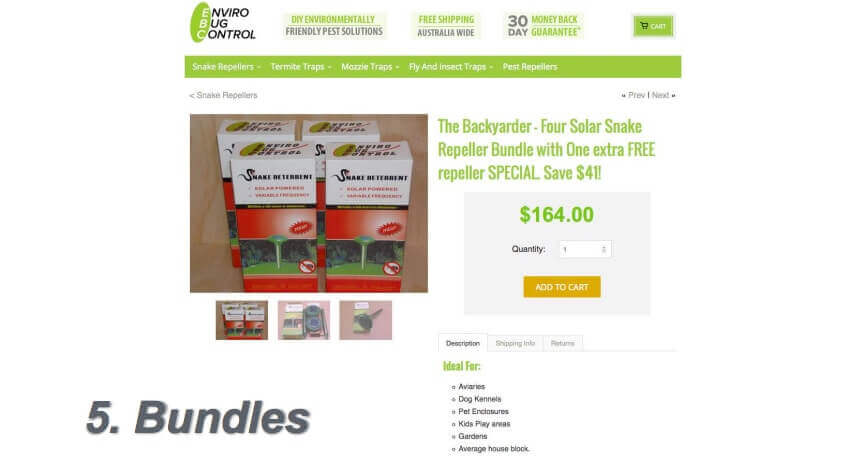
Another way we can get the average order value up is to do bundles. You can see above we’re selling snake repellers. We know one snake repeller isn’t enough, it doesn’t do the job well enough. So we’re creating bundles. And we also know from copywriting that if we give it a name, then they’ll be able to identify it, it’ll be unique, no one else will have the exact same product bundle as ours, and they’ll be able to identify with it. So in this case, we’re calling it the Backyarder, and they can buy four snake repellers for the price of three. And it really, really, works great. Great for getting your average order value up and great for delivering your customers exactly what they need, and they can self-identify with that.
Number 6: Wizard Based Tripwire Funnel
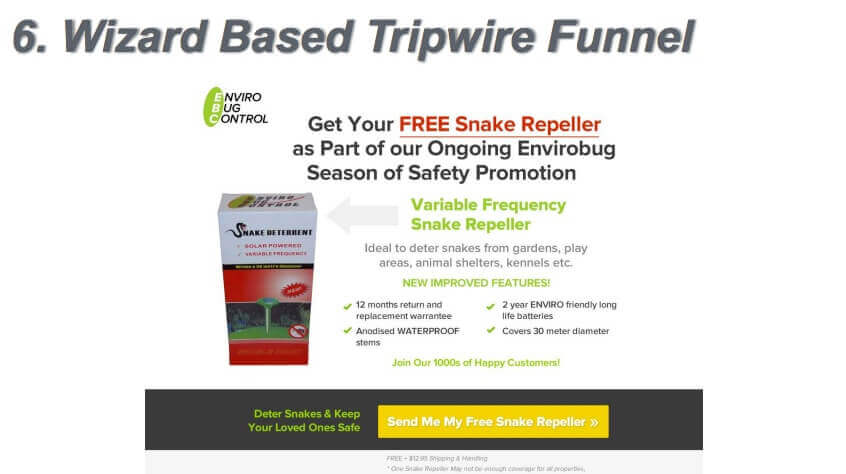
So then number six. Have you ever seen this one done before? It’s what I call, “A wizard based tripwire funnel.” Wizard based selling is where, and I think everyone would have been a wizard at some stage, you’re going along and you’re choosing which one’s right for me. And there are basically a whole bunch of different buttons that step you along until you get to the right solution for you. We took that concept and we combined it with the tripwire concept and we came up with these wizard based tripwire funnels, which is working well at the moment. We’re even sending our Google Ads to these (see image above) as well as Facebook Ads.
So in this case, while everyone else is selling snake repellers on Google or selling snake repellers on Facebook, we’re giving them away saying, “Here grab a free snake repeller, it’s free plus shipping.” So they do the free plus shipping, they check out and in this case pay $12.95 to cover the shipping.
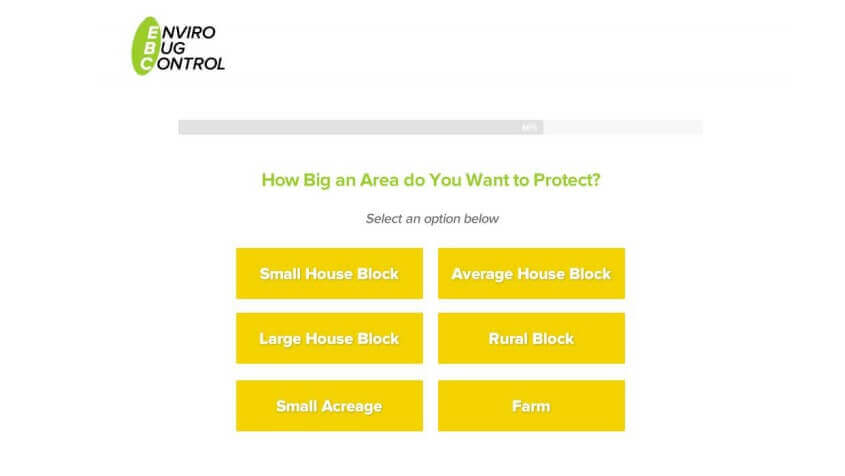
Then on the next page, we’re saying and this is where it gets into wizard based selling, “How big an area do you want to protect?” and we’ve got, “Have you got a small house block? Have you got an average house block? A large house block? A rural block?” You get the idea. That will then identify which one is right for them. And then once they go on from there, it’s then making them a personalised recommendation, you can see the headline here says, “Your personalised snake repeller recommendation.” Based on the information you provided us, please see our recommendation below.
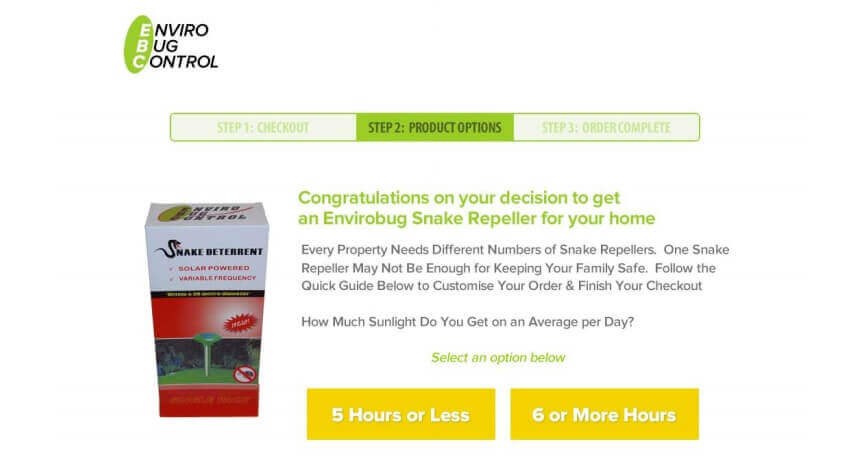
You’ll need four snake repellers to keep your property safe. You already have one snake repeller, would you like to customize your order by adding three more?” then it says, “Normally this price and now only that.” And they can either click Add To My Order, and it does just that. They don’t have to check out again, it just adds it to their order. Or they can choose, and my sales copy is probably a little bit cheeky here, I say, “No, thanks. I don’t want the correct number of snake repellers for my property and family.” So who’s going to choose that?
However, some people do. And in that case, we then follow them up by phone and just do a consultative close and say, “Are you sure you got the right stuff?” and either way we’re acquiring a customer at cost, and if we don’t upsell them through the wizard based selling, then we upsell them via phone. This is working really, really well.
I hope you got great value from part 3 of 4 eCommerce content-packed blogs. Keep an eye out for part 4 of 4! After that one, you’ll have gone through the Profit Triad of eCommerce and have a solid toolkit for launch your eCommerce business to a new level of sales and marketing.

